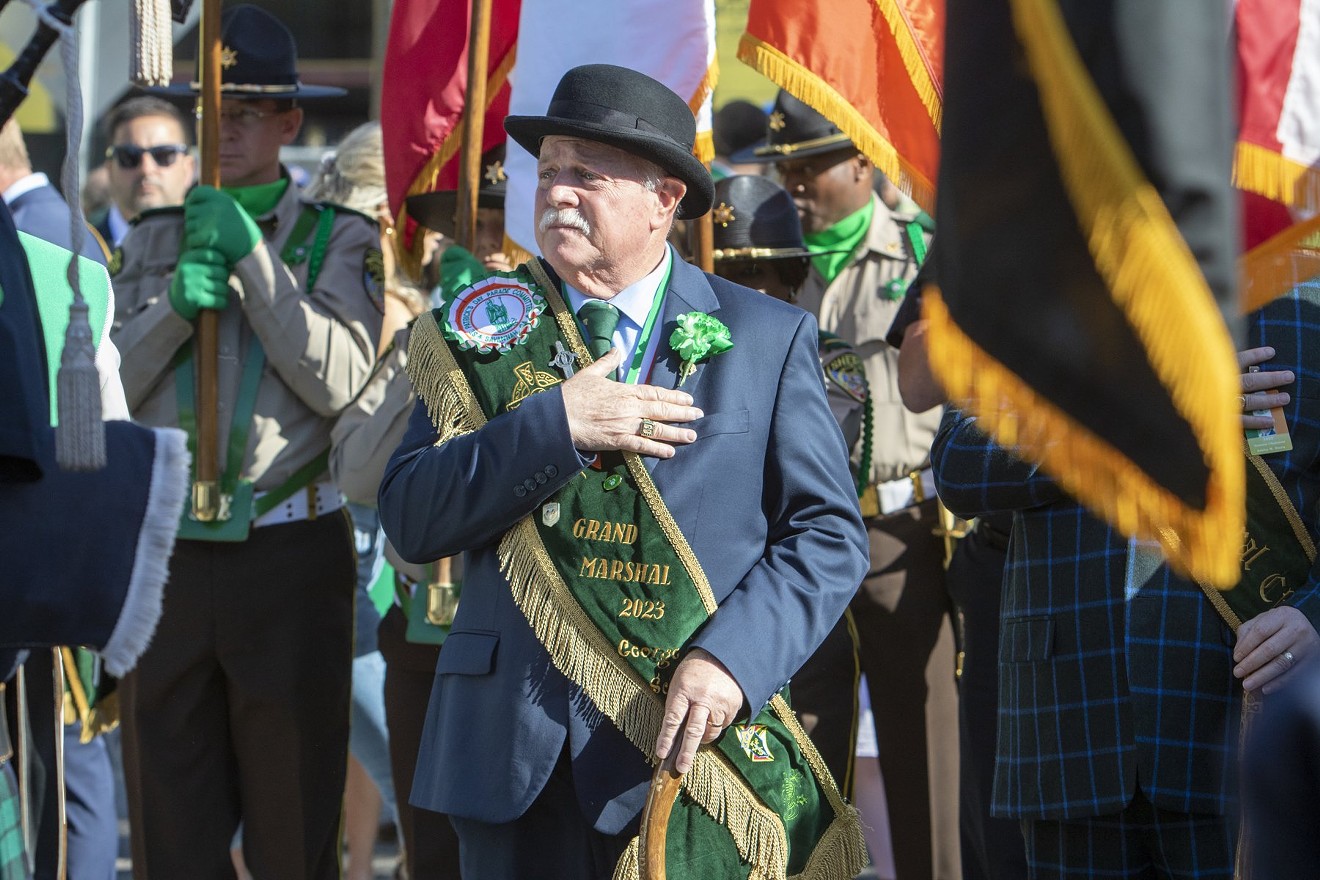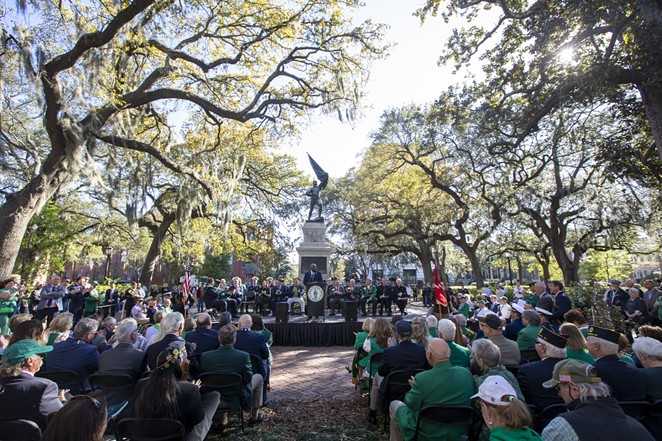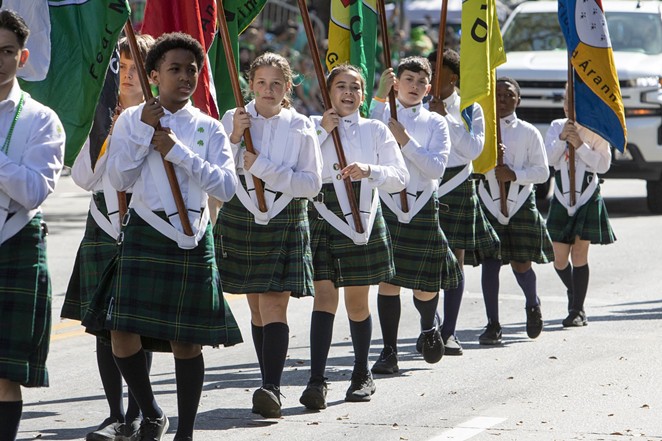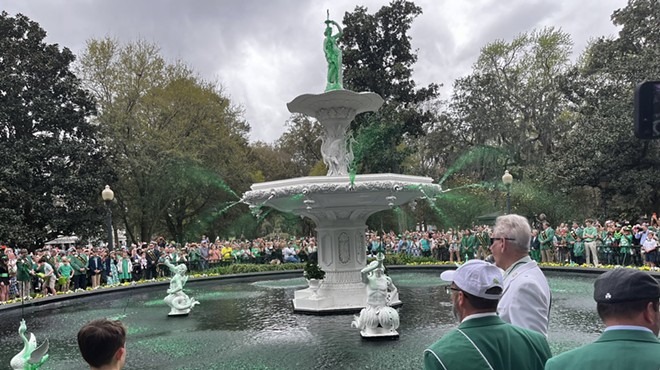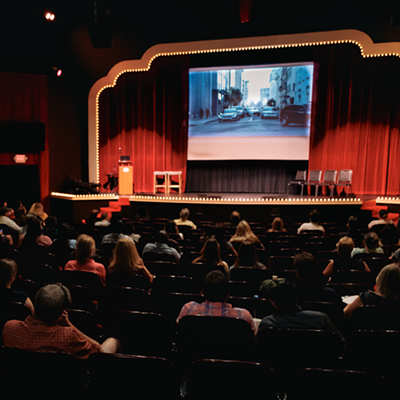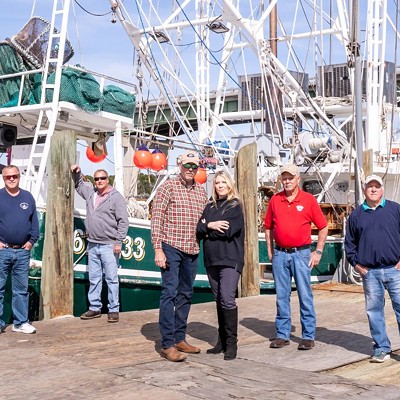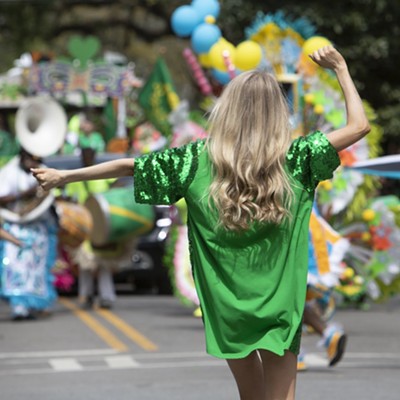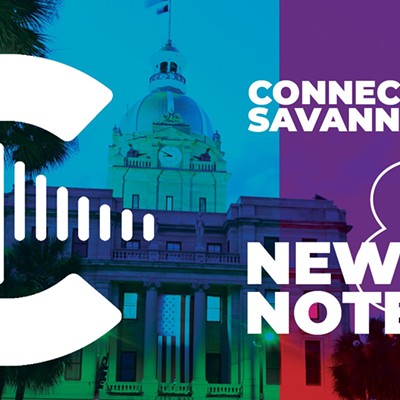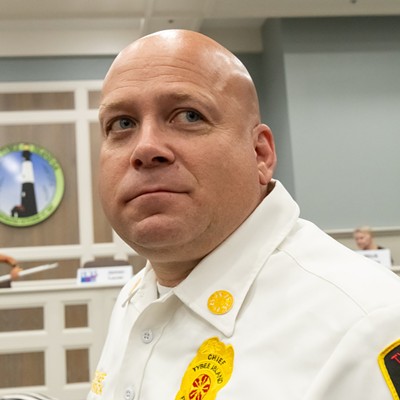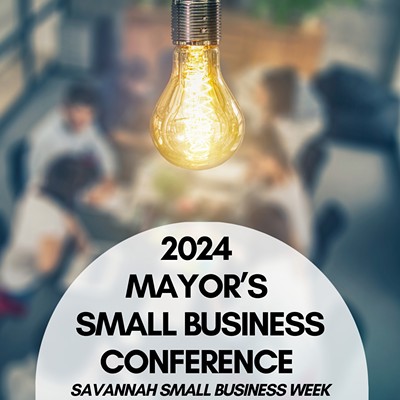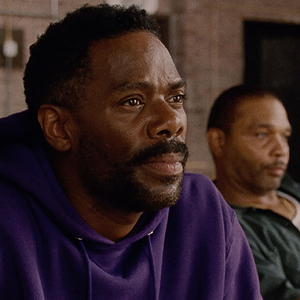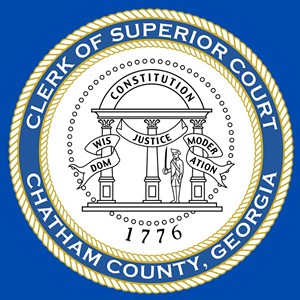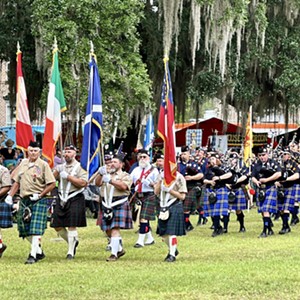Every year, for the past 200 years, Savannah celebrates St. Patrick’s Day with an annual parade that showcases Irish pride, tradition and community. People from around the country visit Savannah to partake in one of the biggest demonstrations that, in the end, lasts a few hours but upholds the beliefs and customs established long ago.
“I wouldn’t want to be anywhere else in the world that day. There’s no place. You couldn’t offer me any money,” said George Schwarz, last year’s parade grand marshal and lifelong Savannahian.
Schwarz, who joined the St. Patrick’s Day Parade Committee in 1983, knows all too well the work that goes into planning and preparation.
Since 1987, he’s been a member of the adjutant staff—the group wearing white jackets on parade day responsible for coordinating the units—a role he will do again this year.
“There’s people working on this parade for a year,” said Schwarz. “We talk about it by that afternoon, about what we need to do to make it better for every year.”
Timothy Mahoney is one of those people. A member of the Parade Committee since 1994, he was elected to become general chairman in May 2023 and has been meeting with his executive staff since. From confirming permits and reservations for events including the Celtic Cross Ceremony to reviewing weekly applications for parade participants, Mahoney and the Parade Committee stay busy.
“All those things happen pretty much right up until a couple of weeks before the parade,” Mahoney said.
The parade, scheduled for Saturday, March 16, stretches a little over three miles long and begins at the intersection of Gwinnett and Abercorn Streets.
“It kicks off at 10:15 and you could have anywhere from 300 to 325 units and that could be a float, that could be horses, that could be a band, that could be a convertible with the past grand marshal riding in it with his family. So those are all considered units.”
The procession was not always like that, Mahony shared, who has seen it grow significantly over the years.
“In 1968 and ‘69, my dad was the general chairman, and the parade wasn't nearly anything like it is today and they didn't have any money. So, they literally laid it out on a dining room table in Midtown with the group and put the parade on the street and it’s just continued to grow for all these years.”
This year, however, marks an important milestone.
“A lot of people want to be involved in this one, of course, being the 200th anniversary on a Saturday. Saturday is always our biggest parade for obvious reasons,” Mahoney said. “Being the 200th anniversary, there's a lot of history. There's an actual group that is totally separate from our executive committee and they formed a group—some past general chairmen, some past grand marshals and it’s called [the] 200th Committee.”
John Fogarty, who served on the executive committee for 12 years and then as the general chairman of the parade in 2021 and 2022, helped initiate the 200th Committee. “Let's create a separate committee,” he told others of his idea, “and we could do some extra fundraising and have a couple extra events to give this year the honor that it deserves.”
Fogarty said about ten members make-up the 200th Committee and in addition to planning events, they’ve made available “three items that you can purchase that commemorate the year.” Those include a challenge coin, limited to only 200, a flag with a commemorative logo, and a coffee table book with parade history and interviews inside.
“Two-hundred years is a big deal. If you go down to Emmet Park and you look at the Celtic Cross monument that was put there in the eighties, on the bottom of it, it says, for all Irish Americans past, present, future.”
The past and its impact on the present may be best understood by Dr. Meaghan Dwyer-Ryan, associate director of the Center for Irish Research and Teaching (CIRT) at Georgia Southern University.
“It is pretty unusual because on the surface, you know, unless it's March, you don't really think of Savannah as having this big Irish community. But the signs are all there. You just have to know where to look,” Dwyer-Ryan said.
Emmet Park on Bay Street, for example, was originally known as Irish Green, according to Dwyer-Ryan. “This was a gathering place for the Irish who lived over in the Old Fort district and in that part of town,” she said. “They renamed the space Emmet Park in honor of an Irish revolutionary hero, Robert Emmet.”
Other signs of Irish communities in Savannah include the Cathedral Basilica of St. John the Baptist as well as stones and ballast in Factors Walk that were originally brought from Ireland. Dwyer-Ryan noted that a plaque dedicated to Michael Cash, a stonemason from County Wexford, Ireland who built the Factors Walk retaining wall, is yet another indicator of Savannah’s Irish history. Some of the early arrivals, Dwyer-Ryan said, “came as a result of political activities going on in Ireland, others came in search of land, good opportunities, but the politics was pretty key.”
“Those first Irish immigrants that came, particularly in the late 18th and early 19th century, those were largely Protestants from Northern Ireland. So, a lot of their descendants are still here. They kind of were responsible for creating some of those foundational organizations that exist today.”
One of those organizations is the Hibernian Society, which was established in 1812 and continues to be important to Savannah’s Irish community. It’s credited with starting the city’s first public St. Patrick’s Day parade in 1824. “Some of these early organizations, like the Hibernian Society, were actually established to help these incoming migrants,” Dwyer-Ryan said.
“From the beginning, the community really did work together because by the 1820s and 1830s, Savannah started to attract more of the Catholic Irish migrants, many of them who came to build things like the Savannah Ogeechee Canal [and] other construction projects in the area,” she said. “And then by the time of the Irish famine of the 1840s and fifties, that's when you start to see…a bigger wave of migrants coming.”
Those that came settled into Savannah neighborhoods and while mixed, three prominent Irish areas emerged—Old Fort, Yamacraw and Frogtown. “On the east side of the city was Old Fort,” said Dwyer-Ryan. “You still get an Irish identification with that neighborhood, especially around Washington Square,” she said, which was one of the first areas Irish immigrants settled. “If you go to Washington Square, there's a plaque dedicated to the fire company that was in operation in that area and it was largely Irish-American.”
Generations later, there’s an immense amount of pride that surrounds Irish identity in Savannah. “This idea that they're not just Irish, they're not just from Savannah, they're Savannah Irish,” Dwyer-Ryan said.
While the Savannah Irish have enjoyed St. Patrick’s Day festivities for 200 years, its bigger than the parade itself. “A lot of faith, a lot of family, a lot of tradition,” Tim Mahoney said of the celebration. “At the end of the day, yes, we have a parade. We have a grand marshal, and that grand marshal leads our parade with dignity…but it's about the feast of Saint Patrick and honoring Saint Patrick.”
Father Michael Kavanaugh, a native of Savannah who has served at St. Peter’s Catholic Parish for almost nine years said, “The original idea is to celebrate the work that was done by St. Patrick in bringing the faith of Christianity to Ireland and all that came from that was the great faith that the Irish brought to this country.” He said many of the priests who have served in the Diocese of Savannah from the 1930s through the 70s were Irish born.
“Our former bishop, Kevin Boland, was born in Ireland, my first pastor and who's retired now, Monsignor Jim Costigan, lots of the clergy who’ve served all over our diocese, not just in Savannah but all over the bottom two thirds of Georgia, have been Irish,” Father Kavanaugh said. “We celebrate the faith in the person of Saint Patrick, what he did to spread the faith, what he did to teach the faith and what he did to defend the faith.”
“It's really a celebration of the power of faith in our communities,” he said.
For Mahoney, Schwarz and Fogarty, faith and family have always been the major goal of parade festivities. “It's really a celebration of gathering of friends and families and some of those friends and family you don't see but once a year,” said Fogarty.
Mahoney agreed, “I look forward to seeing friends of mine that I haven't seen in a year.” The other thing he has enjoyed seeing is the growth of events and entertainment throughout the month of March ahead of the parade. The Celtic Cross Ceremony, the investiture, the greening of the fountain in Forsyth Park and the Jasper Green Ceremony are all events leading up to the big day.
“Seeing how these events have grown over the years is a source of pride for the whole organization,” Mahoney said.
Now in its bicentennial year, the St. Patrick’s Day parade is set to continue its celebration of showcasing Irish pride, faith, and family and passing along those traditions for years to come.

